1. The Power of User-Generated Video Content
1. User-generated video content has become a powerful tool in the modern digital landscape, revolutionizing the way brands and individuals connect with their audiences. With the rise of smartphones and social media platforms, anyone can now easily create and share videos, giving rise to a new era of content creation and consumption. In this section, we will explore the power of user-generated video content and how it has transformed the way we communicate, engage, and influence others.
2. Examples of user-generated video content abound in today's digital world. Platforms like YouTube, TikTok, and Instagram are teeming with videos created by everyday individuals, showcasing their talents, experiences, and opinions. Take, for instance, the countless makeup tutorials created by beauty enthusiasts, offering step-by-step guides on achieving a flawless look. These videos not only provide valuable insights but also build a sense of community among viewers who share a common interest.
3. tips for creating compelling user-generated video content can help individuals and brands maximize their impact. Authenticity is key in this realm, as viewers are drawn to genuine and relatable content. By showcasing real people and real experiences, user-generated videos have the ability to establish trust and forge emotional connections with audiences. Additionally, keeping videos concise and engaging, utilizing visual storytelling techniques, and leveraging popular trends can help capture and retain viewers' attention.
4. The power of user-generated video content can be seen in various case studies. One notable example is the ALS Ice Bucket Challenge, which went viral in 2014. This campaign encouraged individuals to pour a bucket of ice water over their heads to raise awareness and funds for amyotrophic lateral sclerosis (ALS) research. The challenge gained immense traction on social media, with countless participants posting their videos and nominating others to join in. This user-generated content not only raised millions of dollars for the cause but also significantly increased awareness about ALS.
5. Another case study that highlights the influence of user-generated video content is the rise of "unboxing" videos. These videos, where individuals film themselves opening and reviewing products, have become a popular trend on YouTube. Brands have recognized the power of these videos in driving consumer purchasing decisions, leading to collaborations with popular YouTubers to feature their products. By leveraging user-generated content, brands can tap into the influencers' loyal following and benefit from the authenticity and trust they have built with their audience.
6. In conclusion, user-generated video content has proven to be a game-changer in the world of digital marketing and communication. From makeup tutorials to viral challenges, these videos have the power to captivate, inspire, and influence audiences like never before. By understanding the potential of user-generated content and employing effective strategies, individuals and brands can harness this power to connect with their target audience, build brand loyalty, and drive meaningful engagement.
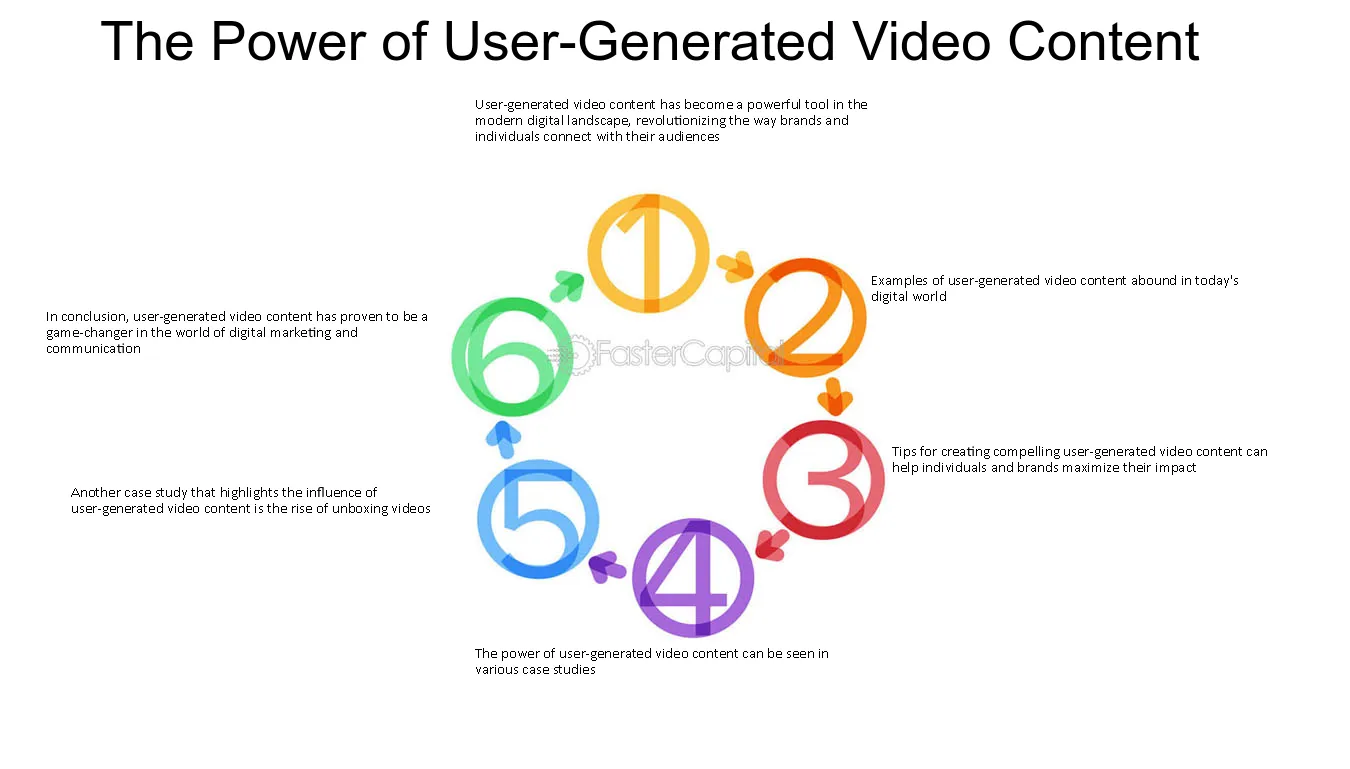
The Power of User Generated Video Content - Action: The Influence of User Generated Video Content
2. The Challenges and Concerns of User-Generated Video Content
1. Quality Control: One of the major challenges associated with user-generated video content is maintaining quality control. Unlike professional video production, user-generated videos often lack the same level of polish, resulting in varying levels of production value and content quality. This can make it difficult for businesses and brands to ensure that the videos align with their desired messaging and brand image. For example, a company may receive user-generated videos that are poorly lit, have shaky camera work, or contain inappropriate content. To address this challenge, businesses can establish clear guidelines and provide resources to help users create higher-quality videos. Additionally, implementing a review process where videos are screened before being published can help maintain a certain level of quality.
2. Brand Reputation: User-generated video content can pose a risk to a brand's reputation if not carefully managed. Since users have the freedom to create and share content, there is a possibility of videos containing offensive or inappropriate material that could reflect poorly on the brand. For instance, a brand may receive user-generated videos that include hate speech or offensive imagery. To mitigate this risk, companies should establish community guidelines and clearly communicate expectations to users. Regular monitoring of user-generated content is also crucial to promptly address any issues that may arise and maintain a positive brand image.
3. Copyright Infringement: Another concern related to user-generated video content is the potential for copyright infringement. Users may unknowingly or intentionally use copyrighted material in their videos without obtaining the necessary permissions. This can result in legal issues for both the user and the brand if the videos are shared or monetized. To avoid copyright infringement, businesses should educate users about copyright laws and provide them with resources to access royalty-free music, images, and other content. Implementing a review process to identify and address any copyright violations can also help protect the brand and its users.
4. Lack of Control: User-generated video content introduces an element of unpredictability and lack of control for brands. Since the content is created by users, businesses may not have complete control over the messaging, tone, or accuracy of the videos. For example, a brand may receive user-generated videos that misrepresent their product or service or contain misleading information. To address this challenge, businesses should clearly communicate their expectations to users, provide guidelines, and offer support and resources to help users create content that aligns with the brand's values and objectives.
5. Monitoring and Moderation: With the increasing volume of user-generated video content, monitoring and moderation become crucial tasks. It is essential to ensure that videos comply with community guidelines, are appropriate for the target audience, and do not contain any harmful or offensive material. Implementing a robust moderation system or using automated content analysis tools can help streamline the monitoring process. Additionally, having a dedicated team or outsourcing moderation tasks can help maintain a safe and positive environment for both users and the brand.
In conclusion, while user-generated video content offers numerous benefits, it also comes with its fair share of challenges and concerns. By addressing these challenges through clear guidelines, resources, monitoring, and moderation, businesses can harness the power of user-generated videos while mitigating potential risks to their brand reputation and ensuring content quality.
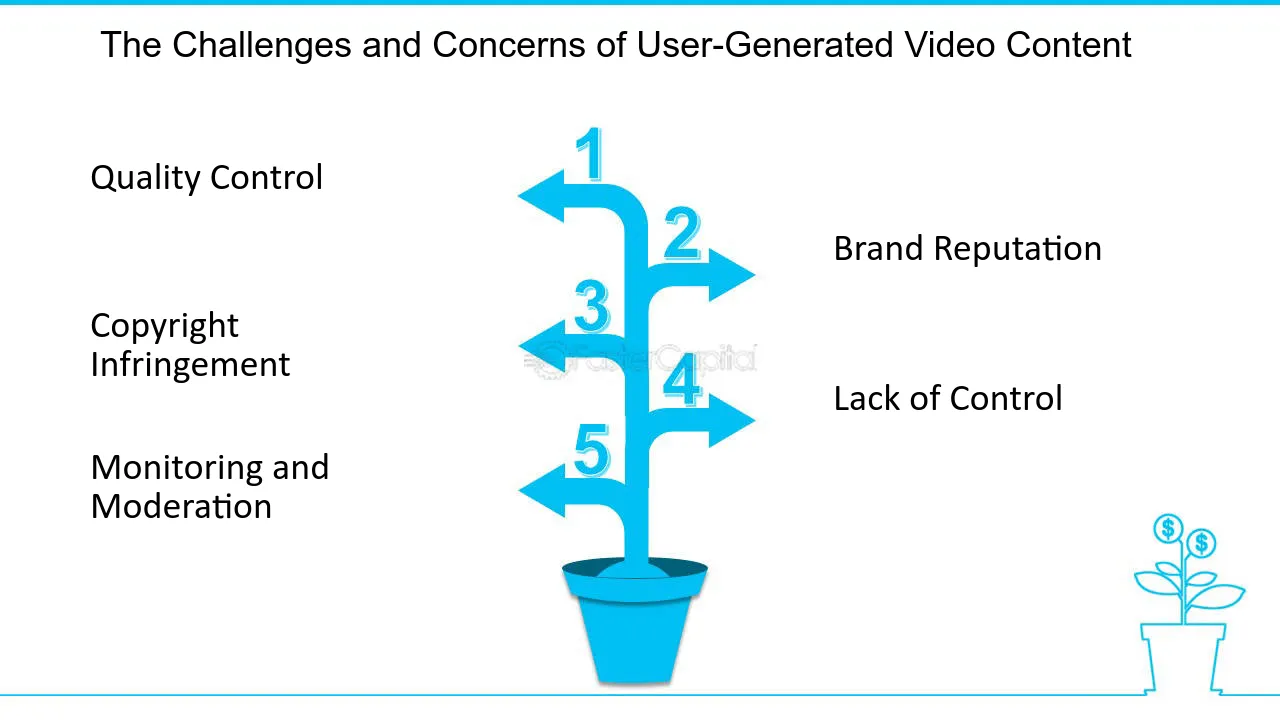
The Challenges and Concerns of User Generated Video Content - Action: The Influence of User Generated Video Content
3. Exploring the Limitless Possibilities of AI Generated Video Content
As technology continues to advance at an unprecedented pace, we find ourselves at the forefront of a new era where artificial intelligence (AI) is revolutionizing various industries. One such field that has benefited immensely from AI is video content creation. With AI-driven algorithms and machine learning capabilities, we are witnessing the emergence of video content that surpasses human imagination and pushes the boundaries of what we thought was possible. In this section, we will delve into the limitless possibilities that AI generated video content brings to the table.
2. Enhancing Special Effects and Visual Realism
One of the most remarkable aspects of AI generated video content is its ability to enhance special effects and visual realism. Traditionally, creating visually stunning effects required extensive manual labor and an array of expensive tools. However, AI algorithms can now analyze vast amounts of data and generate realistic visual effects that are indistinguishable from reality. For instance, AI can be used to seamlessly integrate CGI (Computer Generated Imagery) into live-action footage, resulting in breathtaking scenes that were previously only possible in our wildest dreams.
3. Personalized Content for Every Viewer
AI generated video content also opens up new avenues for delivering personalized experiences to viewers. By leveraging AI algorithms, video platforms can analyze user preferences, browsing history, and demographic information to curate content that is tailor-made for each individual. This level of personalization not only enhances user engagement but also improves the overall viewing experience. For example, streaming services can recommend movies and TV shows based on a viewer's interests, thereby ensuring that they are exposed to content they are more likely to enjoy.
4. Automated Video Editing and Production
Another significant advantage of AI generated video content is the automation of video editing and production processes. Traditionally, editing videos required substantial time and effort, with skilled professionals meticulously cutting and arranging footage. However, AI algorithms can now analyze raw footage, identify key moments, and automatically generate a polished video with minimal human intervention. This not only saves time and resources but also democratizes video production, allowing individuals with limited technical knowledge to create professional-looking videos effortlessly.
5. Breaking Language Barriers
AI generated video content has the potential to break down language barriers and enable global communication like never before. Through the use of natural language processing and machine translation, AI algorithms can automatically generate subtitles and translate video content into multiple languages. This means that a video created in one language can be easily understood and enjoyed by viewers from different regions across the world. This breakthrough has the power to foster inclusivity and enable cross-cultural exchange on a massive scale.
In conclusion, AI generated video content has opened up a world of possibilities that were once unimaginable. From enhancing visual effects and personalizing content to automating video production and breaking language barriers, AI has revolutionized the way we create and consume videos. As technology continues to advance, we can only imagine the incredible innovations and advancements that lie ahead in this exciting field.
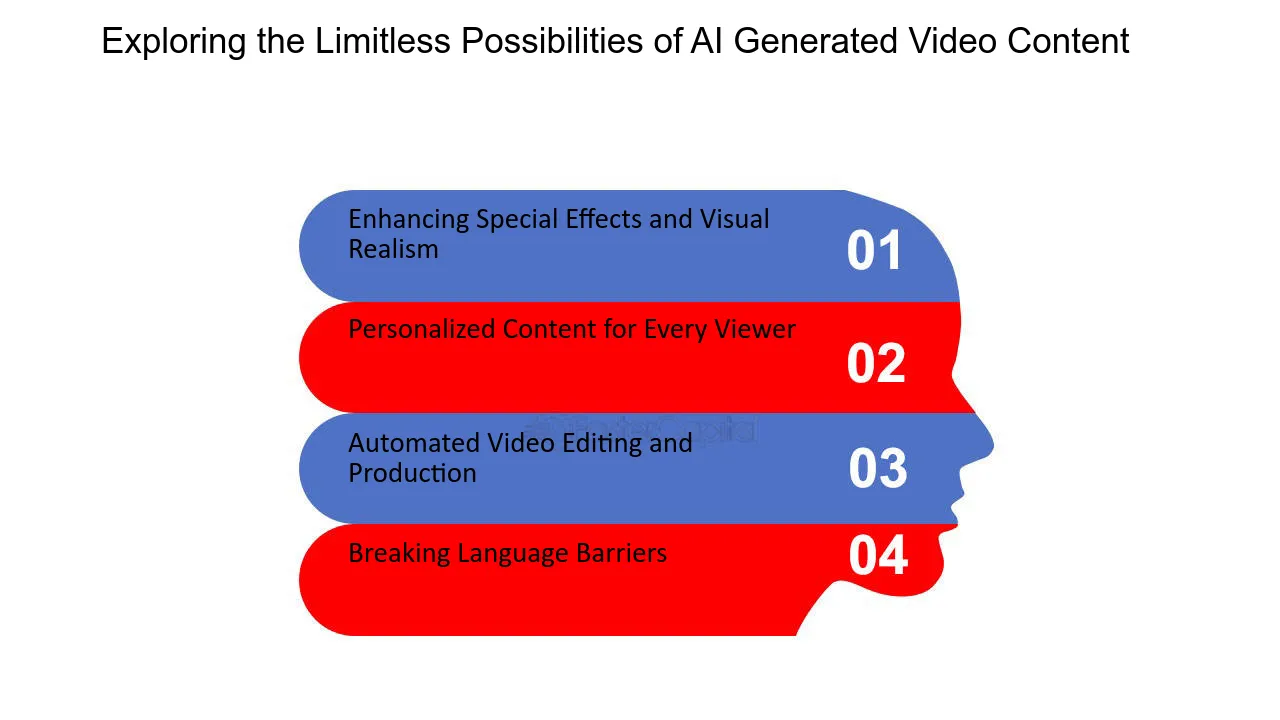
Exploring the Limitless Possibilities of AI Generated Video Content - Ai generated video content beyond human imagination
4. Exploring the World of AI Generated Video Content
In today's fast-paced digital era, where video consumption is on the rise, the demand for high-quality video content creation is at an all-time high. As AI technology continues to advance, it has now evolved to replicate human intelligence, giving rise to the concept of AI-generated video content.
AI-generated video content refers to the use of artificial intelligence techniques, such as machine learning, computer vision, and natural language processing, to automate and assist in various aspects of video content creation. From generating video scripts to editing and enhancing visuals, AI has the potential to transform the way we produce and consume video content.
This article will delve into the possibilities and limitations of AI-generated video content, exploring how it is revolutionizing the field of video production, the potential benefits and challenges associated with it, ethical considerations, the role of human touch in its creation, and its applications in marketing, advertising, entertainment, and media industries. Join us as we dive into the exciting world of AI-generated video content.
5. The Potential Benefits of AI Generated Video Content
1. Increased Efficiency: AI can automate various time-consuming tasks, such as video editing and scriptwriting, allowing video producers to focus more on creative aspects and reduce production time.
2. Cost Reduction: By automating repetitive tasks, AI-powered video content creation can significantly reduce production costs, making quality video content more accessible to businesses of all sizes.
3. Enhanced Personalization: AI algorithms can analyze user data to personalize video content, tailoring it to individual preferences, and improving user engagement and conversion rates.
4. Scalability: With AI-generated video content, it becomes easier to produce large volumes of video content quickly, enabling businesses to meet the ever-growing demand for video content across various platforms.
5. Improved Video Quality: AI algorithms can analyze and enhance video footage, improving image quality, removing background noise, and stabilizing shaky videos, resulting in higher-quality content.
6. Multilingual Capabilities: AI can automate video translation and subtitling, allowing businesses to reach a global audience by easily localizing their video content.
7. data-Driven Decision making: AI-generated insights from user interactions and analytics data can help businesses make informed decisions on video content strategy and optimization.
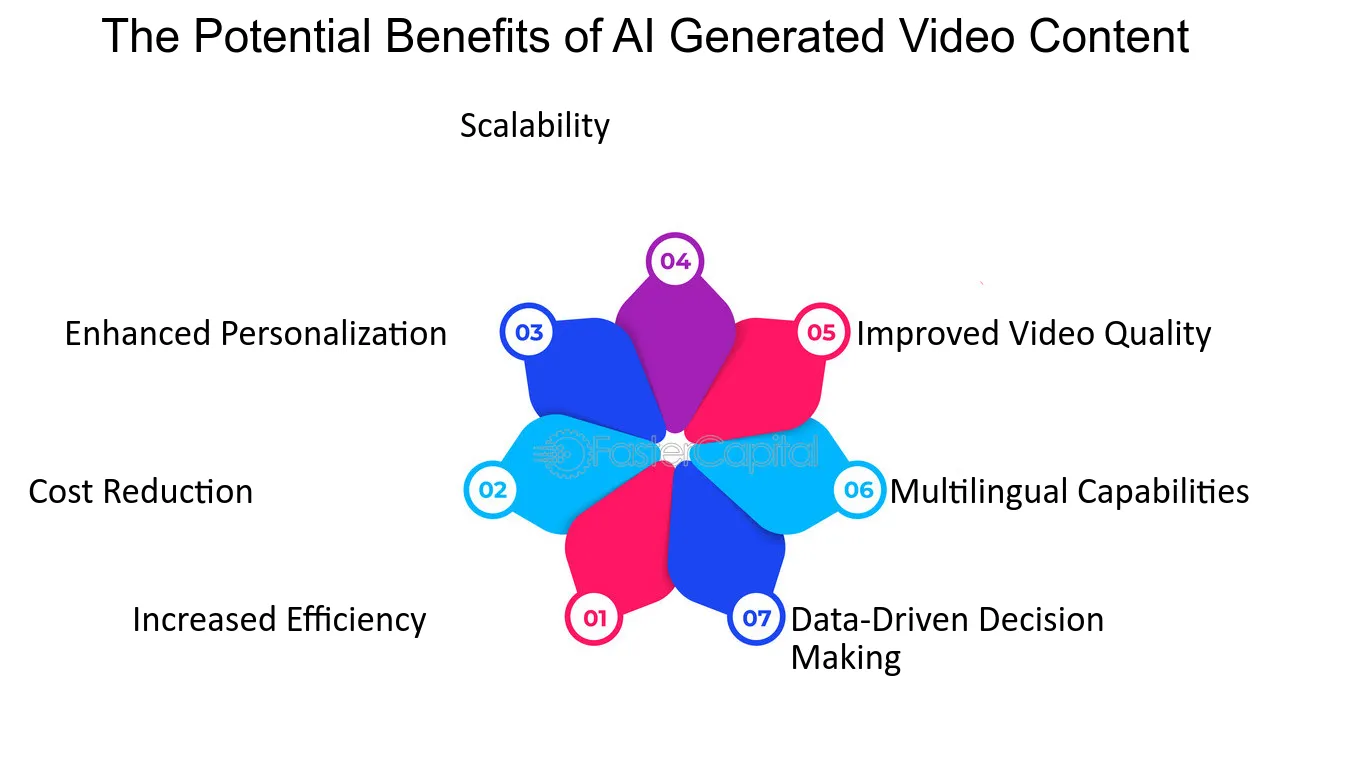
The Potential Benefits of AI Generated Video Content - Ai generated video content possibilities and limitations
6. Exploring the Limitations and Challenges of AI Generated Video Content
1. Lack of Creativity: While AI can automate certain aspects of video content creation, it lacks human creativity and intuition, making it challenging to generate original, innovative, and emotionally engaging content.
2. Contextual Understanding: AI algorithms may struggle with understanding nuanced contexts or complex storytelling, resulting in video content that lacks depth or fails to evoke the desired emotional response.
3. Uncertainty in Content Quality: Relying solely on AI-generated content might result in inconsistencies in video quality or lack of brand alignment, as AI algorithms may not possess the ability to understand brand values or aesthetic preferences.
4. Ethical Concerns: AI-generated content can inadvertently perpetuate biases or spread misinformation if not trained or monitored properly, leading to ethical concerns and potential reputational damage.
5. Limited Emotional Intelligence: AI-generated videos may struggle to convey human emotions authentically, as interpreting and recreating emotions accurately remains a challenge for AI algorithms.
6. Intellectual Property Concerns: AI-generated video content raises questions regarding intellectual property rights, as the concept of originality becomes blurred when AI is involved in content creation.
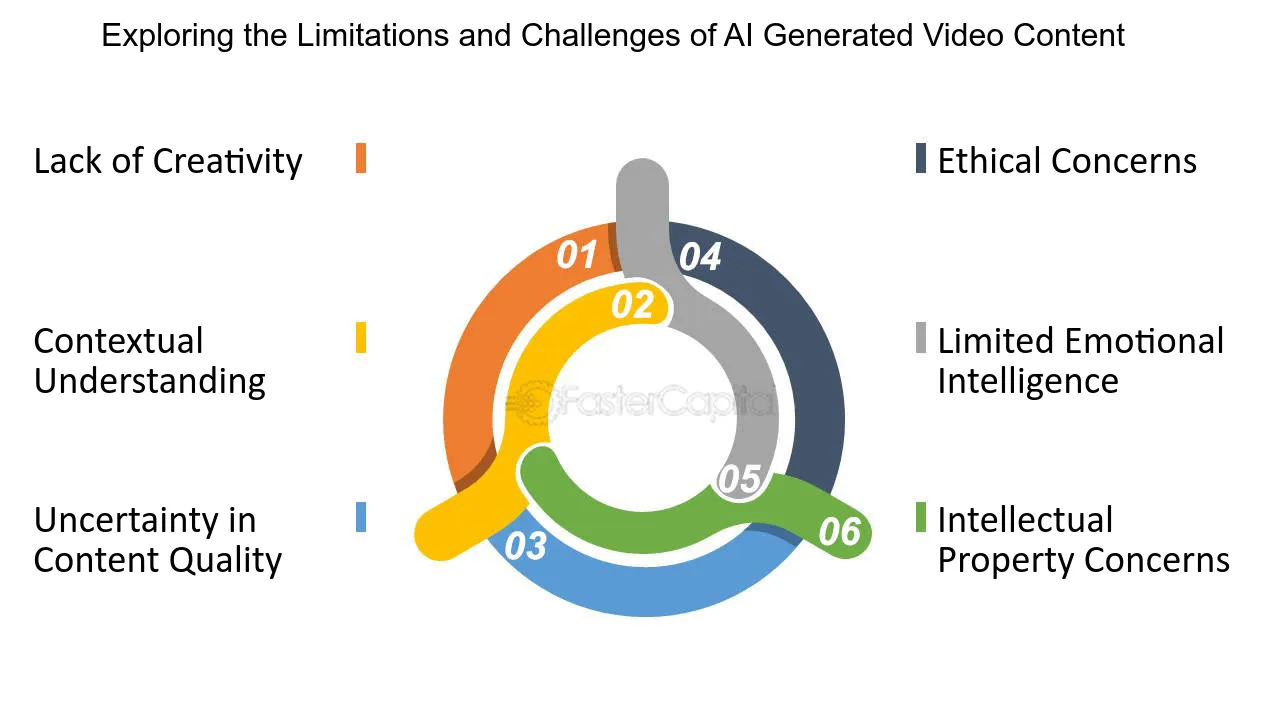
Exploring the Limitations and Challenges of AI Generated Video Content - Ai generated video content possibilities and limitations
7. Ethical Considerations in AI Generated Video Content
1. Bias Mitigation: Ensuring AI algorithms are trained on diverse and unbiased datasets is crucial to prevent the propagation of biases in AI-generated video content.
2. Transparency and Disclosure: It is essential for businesses to be transparent about the use of AI-generated content, clearly disclosing to viewers that they are interacting with AI-created videos.
3. User Consent and Privacy: Businesses should obtain user consent and comply with privacy regulations when using AI algorithms to collect and analyze user data for personalization purposes.
4. Responsible AI Development: Adhering to ethical principles, organizations should adopt responsible AI development practices, including regular audits, monitoring, and transparency in AI systems.
5. Legal Compliance: Ensure compliance with copyright laws, intellectual property rights, and other legal regulations when using AI-generated video content.
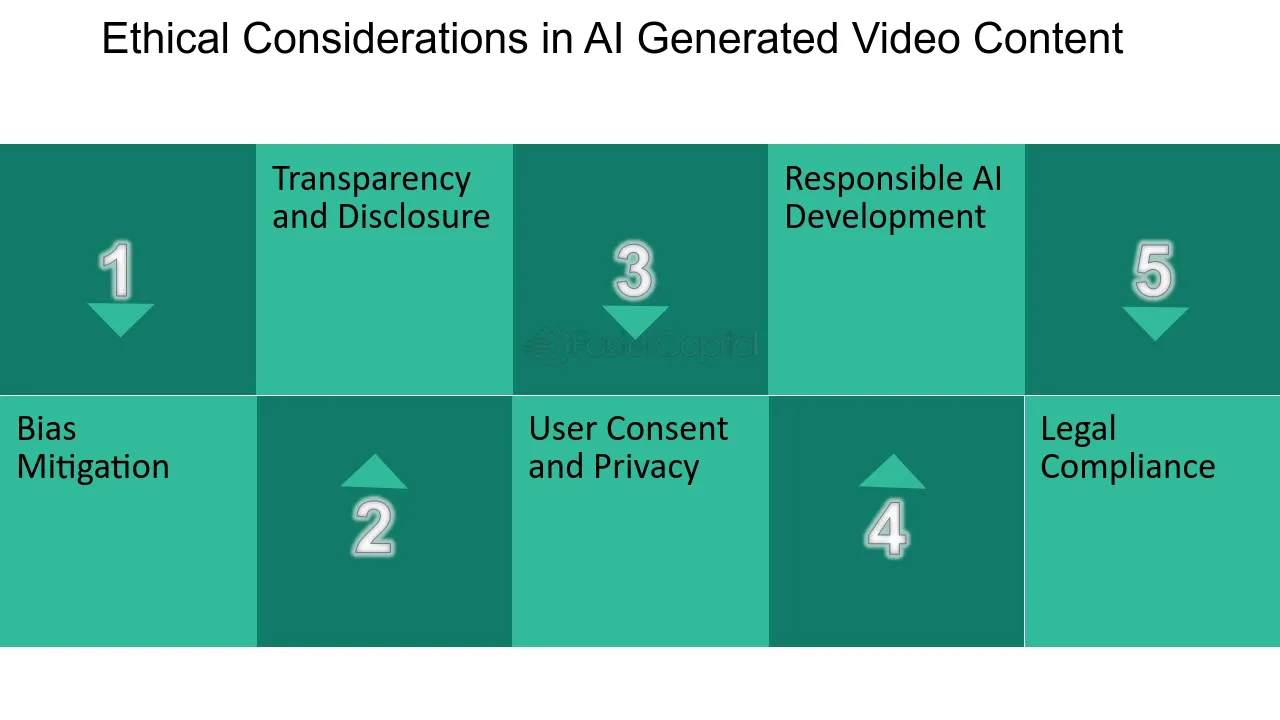
Ethical Considerations in AI Generated Video Content - Ai generated video content possibilities and limitations
8. The Role of Human Touch in the Creation of AI Generated Video Content
1. Creative Input: The role of humans remains crucial in providing creative input, developing innovative ideas, and ensuring the emotional connection and authenticity in AI-generated video content.
2. Quality Control: Humans play a vital role in reviewing and approving AI-generated video content, ensuring its alignment with brand guidelines, maintaining quality, and avoiding potential errors.
3. Domain Expertise: Human expertise is valuable in setting objectives, defining video content strategy, and maintaining a deep understanding of target audiences, ensuring AI-generated videos meet specific business goals.
4. Adaptive Learning: The collaboration between humans and AI allows for iterative improvements in AI algorithms, with humans providing feedback, insights, and fine-tuning the AI models.
5. Enhancing Emotional Appeal: Human creativity and intuition are instrumental in infusing AI-generated videos with emotional appeal, capturing the essence of human experiences and establishing deeper connections with viewers.

The Role of Human Touch in the Creation of AI Generated Video Content - Ai generated video content possibilities and limitations
9. AI Generated Video Content in Marketing and Advertising
1. Enhanced Ad Targeting: AI-generated video content can leverage user data to personalize advertisements, making them more relevant to target audiences, and improving ad engagement and conversion rates.
2. Programmatic Video Advertising: AI algorithms can automate various aspects of programmatic video advertising, such as real-time bidding, ad placement, and optimization, improving campaign performance and cost-efficiency.
3. Dynamic Video Content: AI-generated video content can create personalized and interactive experiences, allowing businesses to dynamically change video content based on user preferences or viewing context.
4. A/B Testing and Optimization: AI algorithms can analyze user engagement data, conduct A/B testing, and optimize video content to maximize message resonance and conversion rates.
5. data-Driven insights: AI-generated analytics data can provide businesses with valuable insights into viewer behavior, preferences, and demographics, allowing for data-driven decision-making in marketing strategies.
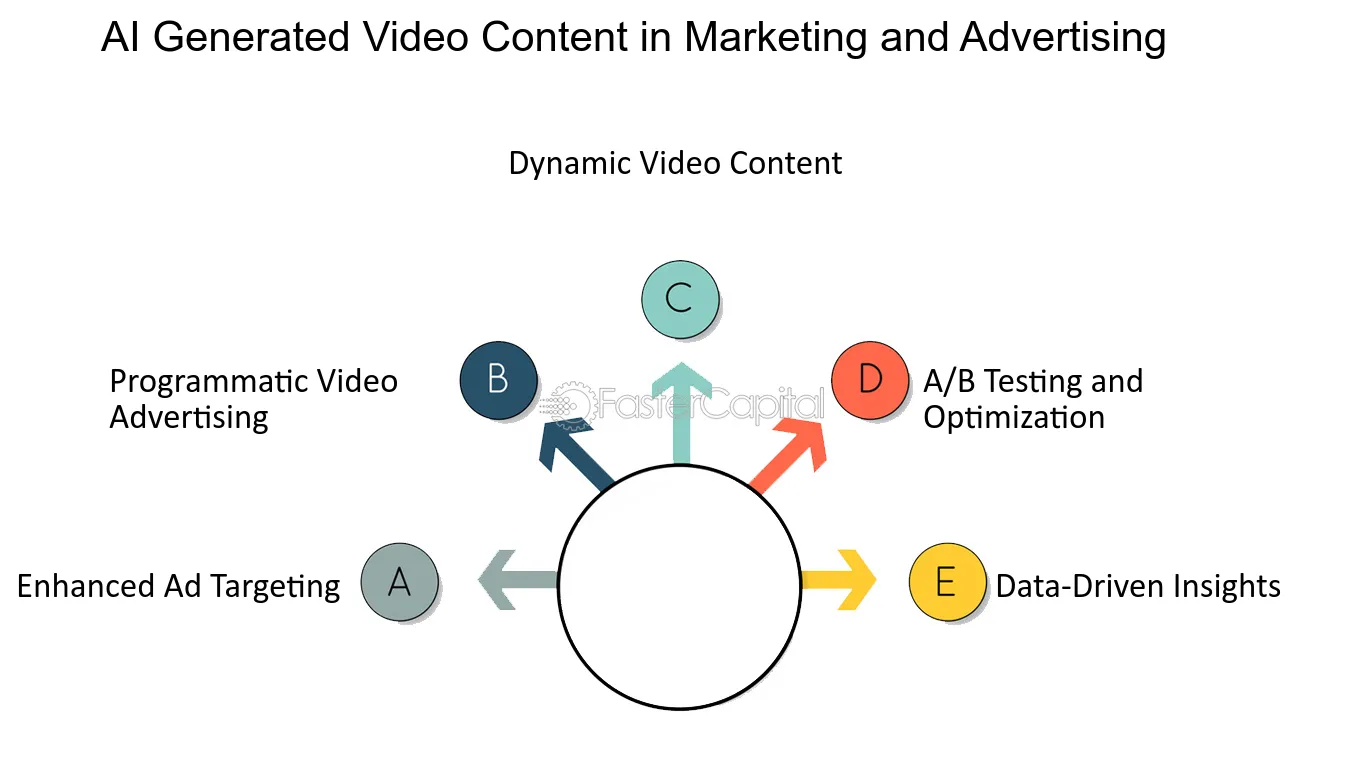
AI Generated Video Content in Marketing and Advertising - Ai generated video content possibilities and limitations
10. AI Generated Video Content in Entertainment and Media Industries
1. Automated Content Curation: AI algorithms can analyze user preferences, behaviors, and feedback to curate personalized video content recommendations, improving user satisfaction and content discovery.
2. virtual reality (VR) and Augmented Reality (AR): AI-generated video content can be used to create immersive VR and AR experiences, enhancing storytelling and delivering more engaging entertainment and media content.
3. Gaming Industry: AI-generated video content can be utilized in the gaming industry to create realistic character animations, dynamic cutscenes, and interactive storytelling, enhancing gameplay experiences.
4. Digital Content Platforms: AI-generated video content can automate the process of content creation for digital platforms, ensuring a constant stream of fresh and engaging content for users.
5. Enhanced Post-Production: AI algorithms can automate video editing, motion graphics, and special effects, empowering media professionals to create visually stunning content more efficiently.
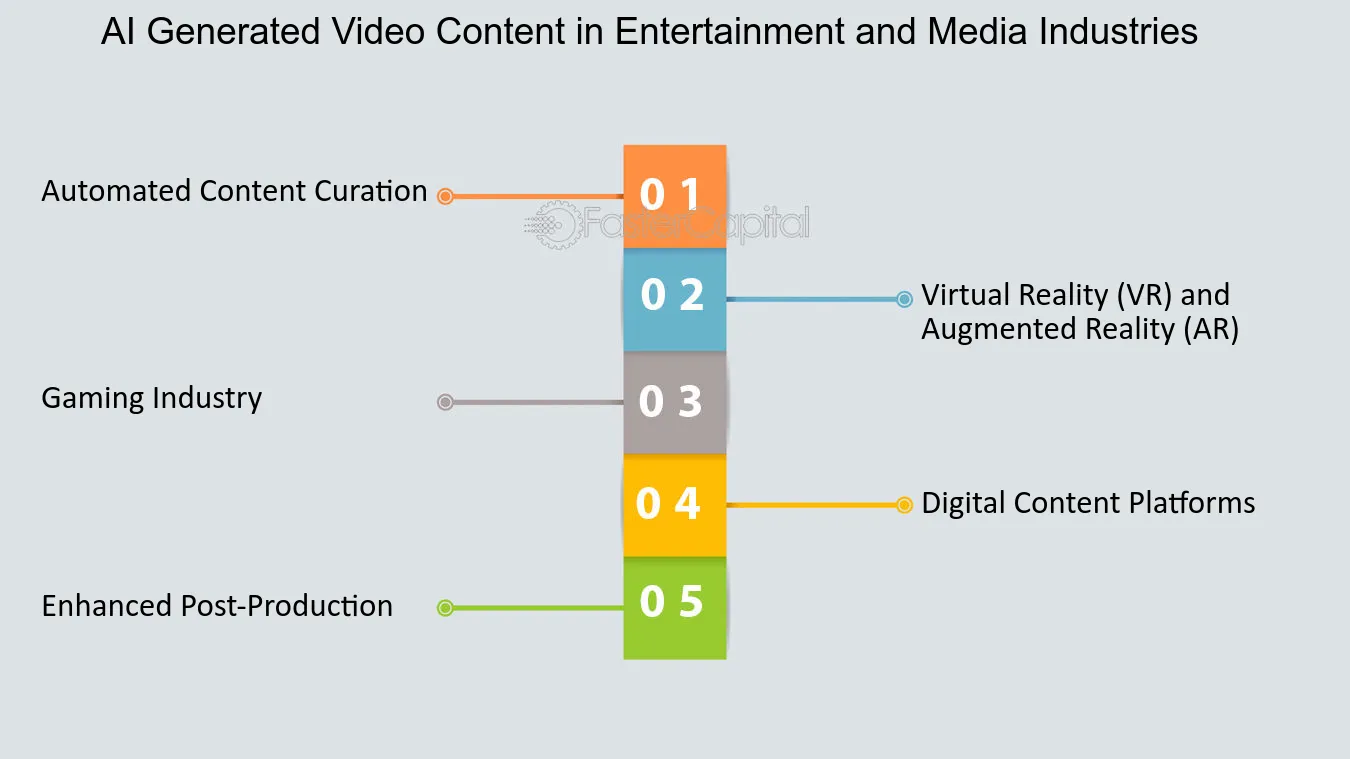
AI Generated Video Content in Entertainment and Media Industries - Ai generated video content possibilities and limitations
11. The Power of Employee Generated Video Content
In today's digital age, video content has become an essential tool for businesses to connect with their audience and promote their brand. With the rise of social media platforms like YouTube, Instagram, and TikTok, video has become the preferred medium for consumers to consume information, entertainment, and connect with others. And when it comes to creating video content, who better to represent a company than its own employees?
Employee generated video content is a powerful tool that can help businesses expand their reach, boost employee engagement, and establish authenticity and credibility. By encouraging and empowering employees to create videos, companies can tap into a wealth of creativity and unique perspectives that can resonate with both current and potential customers.
In this article, we will explore the benefits of employee generated video content for expanded reach. We will delve into how video content can boost employee engagement, enhance authenticity and credibility, provide cost-effective marketing, expand reach, strengthen company culture, build trust and connection with the audience, empower employee advocates, leverage social media channels, and showcase success stories from companies that have successfully implemented employee generated video content strategies.
Benefits of Experimentation in Content Distribution
In today's digital age, content distribution has become a crucial aspect of any successful marketing strategy. With so much content being created and shared on a daily basis, it can be challenging for businesses to stand out from the crowd and reach their target audience. This is where experimentation in content distribution comes into play.Experimentation in content distribution refers to the process of trying out different strategies, channels, and formats to distribute and promote content. It involves testing and analyzing various approaches to determine what works best for your specific audience and goals. By constantly experimenting and adapting, businesses can gain valuable insights, improve their distribution efforts, and ultimately achieve better results.
13. The Role of AI-Generated Video Content in Marketing Strategies
1. Capturing Attention: In today's fast-paced digital world, capturing the audience's attention is crucial for marketers. Video content has proven to be one of the most effective ways to engage and captivate viewers. AI-generated video content holds immense potential in creating visually appealing and attention-grabbing videos that can leave a lasting impact on the audience.
2. Personalized Experiences: Personalization is a key aspect of modern marketing strategies. AI-generated video content can be customized to cater to the unique preferences and interests of individual viewers. By leveraging data and insights, marketers can create personalized video ads that resonate with their target audience, resulting in increased engagement and higher conversion rates.
3. Explainer Videos and Tutorials: AI-generated video content can also be used to create explainer videos and tutorials, providing valuable information and guidance to customers. For example, a company selling a complex product can use AI-generated videos to simplify explanations and demonstrate how the product works, making it easier for customers to understand and make informed purchasing decisions.
4. Emotional Connection: Videos have the power to evoke emotions and create a strong connection with the audience. AI-generated video content can be designed to elicit specific emotions, helping marketers establish a deeper connection with their target audience. For instance, a heartfelt AI-generated video can evoke empathy and build trust, strengthening the brand-customer relationship.
5. Increased Shareability: Compelling and visually appealing videos are more likely to be shared on social media platforms, expanding the reach of marketing messages. AI-generated video content can be optimized for social sharing, increasing the chances of virality and enhancing brand exposure.
AI-generated video content offers marketers a powerful tool to engage, educate, and inspire their target audience.
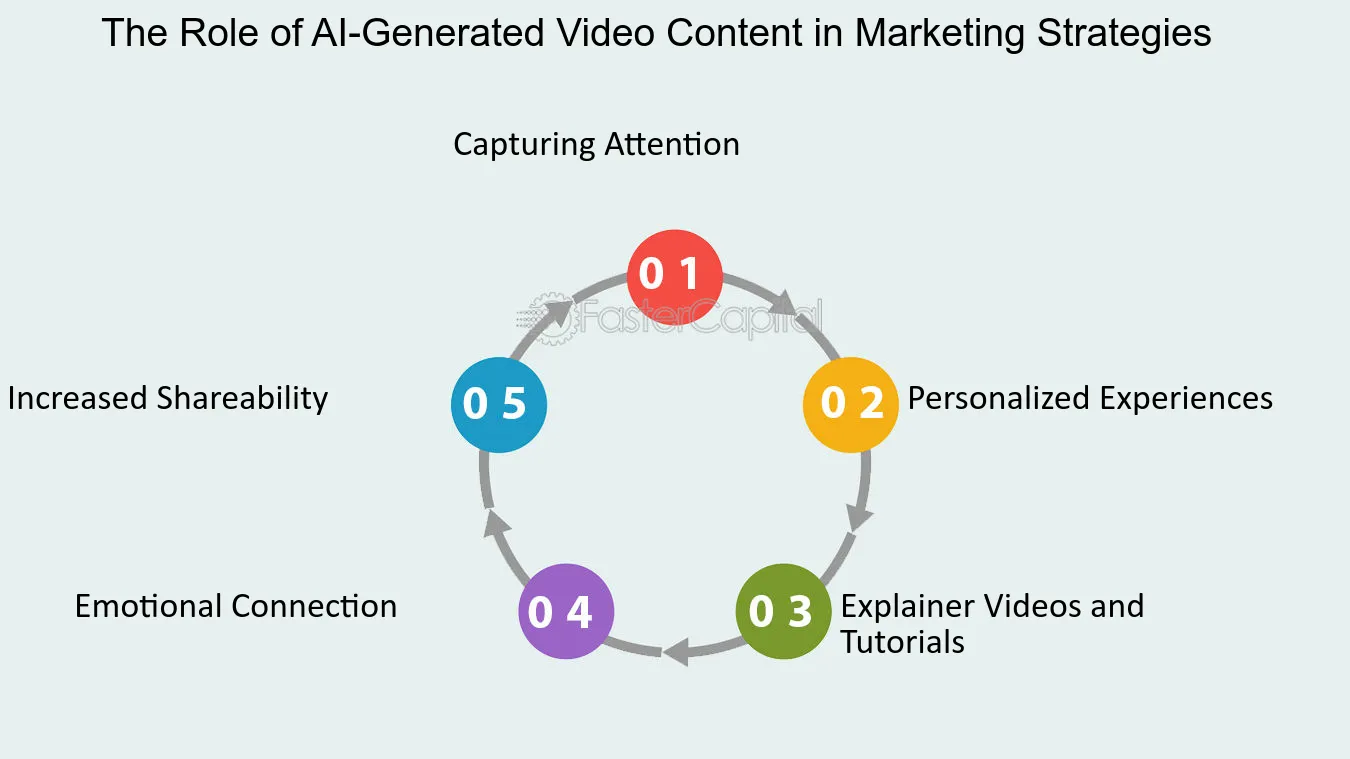
The Role of AI Generated Video Content in Marketing Strategies - Chatgpt and potential for ai generated video content in marketing
14. Overcoming Potential Challenges in AI-Generated Video Content
1. Ensuring Quality and Coherence: While AI-generated video content offers numerous advantages, ensuring the quality and coherence of the generated content can be a challenge. Marketers need to carefully train and fine-tune ChatGPT to produce high-quality and coherent video scripts that align with the brand's voice and messaging. Continuous monitoring and refinement are necessary to maintain consistent quality standards.
2. Avoiding Bias and Controversy: AI language models like ChatGPT can inadvertently generate biased or controversial content. Marketers need to be cautious and regularly review the generated video scripts to ensure they align with ethical guidelines and avoid any potential negative impact on the brand's reputation. Careful monitoring and human oversight are crucial to address any biases or controversial statements.
3. balancing Automation and human Touch: While AI-generated video content offers automation and scalability, it's important to strike a balance between automation and maintaining a human touch. Marketers should consider incorporating human input and creativity into the video production process to add a personal and authentic touch that resonates with the audience.
4. Legal and Copyright Considerations: AI-generated video content may involve legal and copyright considerations. Marketers need to ensure that the generated content does not infringe on any intellectual property rights or violate copyright laws. Proper licensing and permissions should be obtained when using third-party content or intellectual property.
By proactively addressing these challenges, marketers can successfully harness the potential of AI-generated video content and overcome any potential drawbacks.
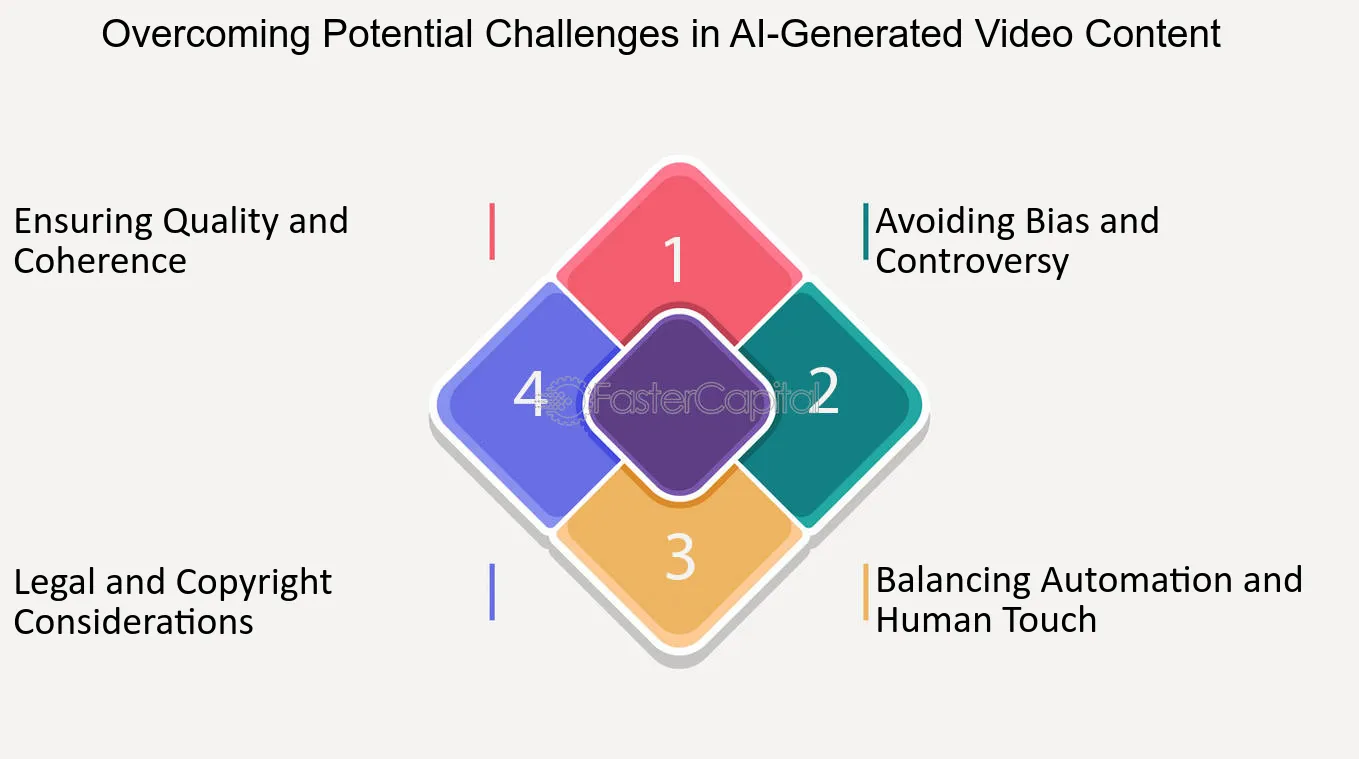
Overcoming Potential Challenges in AI Generated Video Content - Chatgpt and potential for ai generated video content in marketing
15. Leveraging User-Generated Video Content for Customer Acquisition
1. Encourage user-Generated content: User-generated content (UGC) refers to content created by your customers or fans. Encourage your audience to create and share videos featuring your products or services.
Example: If you're a home decor brand, run a contest where customers can submit videos of their beautifully decorated spaces using your products. This not only generates UGC but also showcases the creativity and versatility of your products.
2. Share UGC on Your Channels: Once you receive UGC, share it on your social media channels, website, or email newsletters. This demonstrates that you value and appreciate your customers, while also showcasing real-life examples of your products in action.
Example: If you're a fitness equipment retailer, feature videos of customers using your products in their home gyms on your Instagram feed or website. This helps potential customers visualize how the equipment can be used and encourages them to make a purchase.
3. Run UGC Campaigns: Launch UGC campaigns that encourage your audience to create videos around a specific theme or topic. Offer incentives such as discounts, giveaways, or the chance to be featured on your platforms.
Example: If you're a pet food brand, run a UGC campaign where pet owners submit videos of their furry friends enjoying your products. This not only generates engaging content but also creates a sense of community among pet owners.
4. Engage with UGC Creators: When customers create videos featuring your brand, actively engage with them by liking, commenting, or sharing their content. This builds a personal connection with your customers and encourages them to continue creating UGC.
Example: If you're a travel agency and a customer posts a video of their vacation using your hashtag, make sure to engage with their post by liking and commenting on it. This shows appreciation for their content and encourages others to create videos as well.
5. Obtain Permissions and Rights: If you plan to use UGC created by your customers for promotional purposes, make sure to obtain the necessary permissions and rights. This protects both your customers and your brand.
Example: If you want to feature a customer's video testimonial on your website or in an advertisement, reach out to them for permission and clearly outline how their content will be used. This ensures that you are respecting their privacy and following legal guidelines.
By leveraging user-generated video content, you can tap into the creativity and enthusiasm of your customers, showcase real-life examples of your products or services, build a sense of community, and increase customer acquisition.
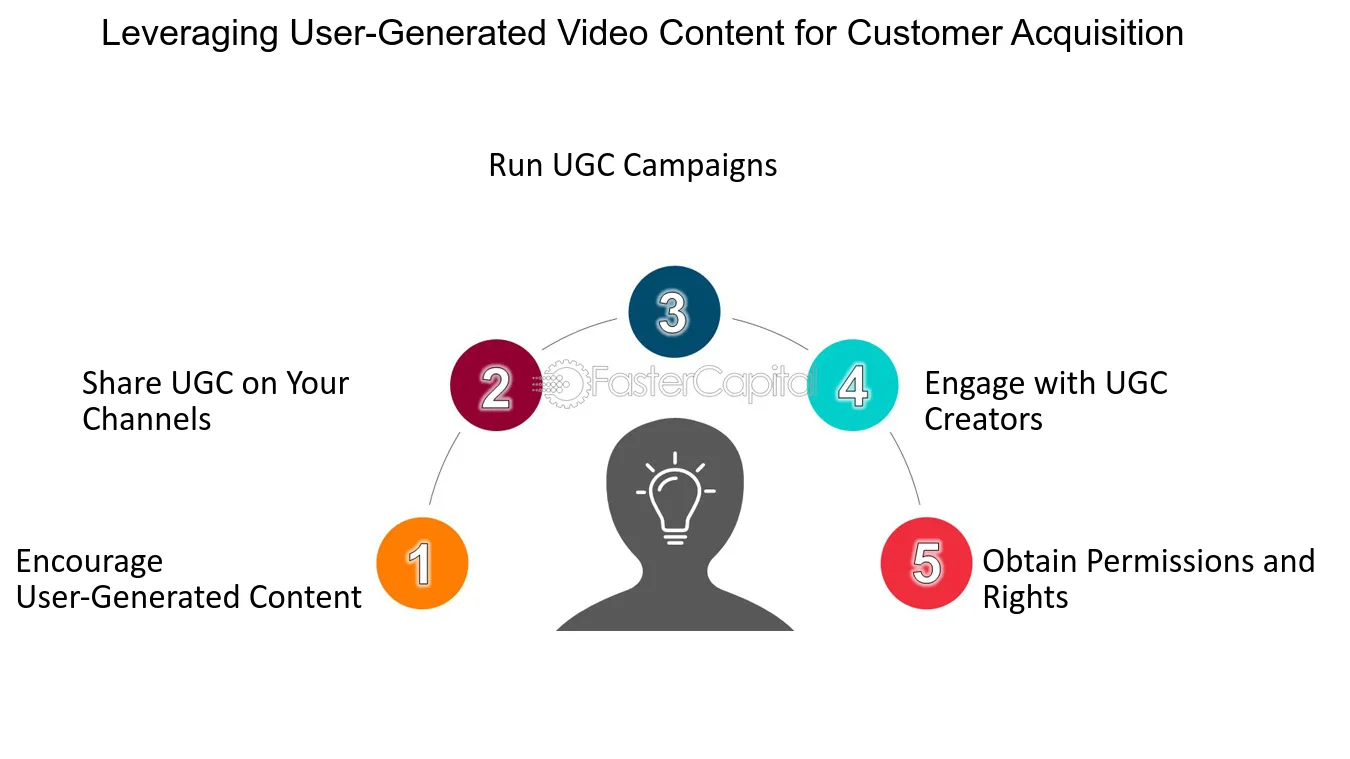
Leveraging User Generated Video Content for Customer Acquisition - Harnessing power of video marketing for customer acquisition
16. The Power of Employee-Generated Video Content
In today's digital age, where social media platforms dominate the way we communicate and share information, video content has emerged as a powerful tool for businesses to engage with their target audience. While professionally produced videos have their place, there is a growing recognition of the value and authenticity that comes with employee-generated video content. This type of content, created by employees themselves, offers a unique perspective and connection that can greatly boost reach and impact.
2. Authenticity and Trust
One of the key reasons why employee-generated video content is so powerful is its authenticity. Unlike polished corporate videos, employee-generated content feels genuine and relatable. When employees share their experiences, insights, or expertise through videos, it gives a sense of transparency and trust that can resonate with customers and potential clients. Authenticity builds credibility, and customers are more likely to trust content that comes directly from the employees of a company.
For example, imagine a fitness company that encourages its employees to share their fitness journeys through video content. These videos could feature personal stories of overcoming challenges, tips for staying motivated, or even workout routines. By showcasing real employees and their experiences, the company establishes a connection with its audience, inspiring trust and loyalty.
3. Employee Advocacy
Employee-generated video content also serves as a powerful form of employee advocacy. When employees share videos about their work or the company they are part of, they become brand ambassadors, spreading positive messages and creating a sense of pride within the organization. This type of content can be particularly effective in attracting top talent, as potential employees get a glimpse into the company culture and the passion that employees have for their work.
For instance, a tech company might encourage its employees to create videos showcasing their innovative projects or the impact their work has on society. By allowing employees to become advocates for the company, potential clients and job seekers gain a deeper understanding of the company's values and expertise, leading to increased interest and engagement.
4. Increased Reach and Engagement
Employee-generated video content also has the potential to significantly boost reach and engagement. When employees share videos on their personal social media accounts, their networks become exposed to the content. This can result in a ripple effect, as friends, family, and acquaintances share the videos further, expanding the reach beyond the company's immediate followers.
For example, a travel agency could encourage its employees to create videos highlighting their favorite travel destinations or sharing travel tips. When employees share these videos on their personal social media channels, they reach a broader audience that might not have been aware of the company before. By leveraging the networks of employees, businesses can tap into new markets and attract potential customers who may be interested in their products or services.
In conclusion, employee-generated video content holds immense power in today's digital landscape. Its authenticity, employee advocacy, and potential for increased reach make it a valuable asset for any business looking to boost their online presence. By empowering employees to share their stories and expertise through video, companies can forge stronger connections with their audience, inspire trust, and ultimately drive growth.
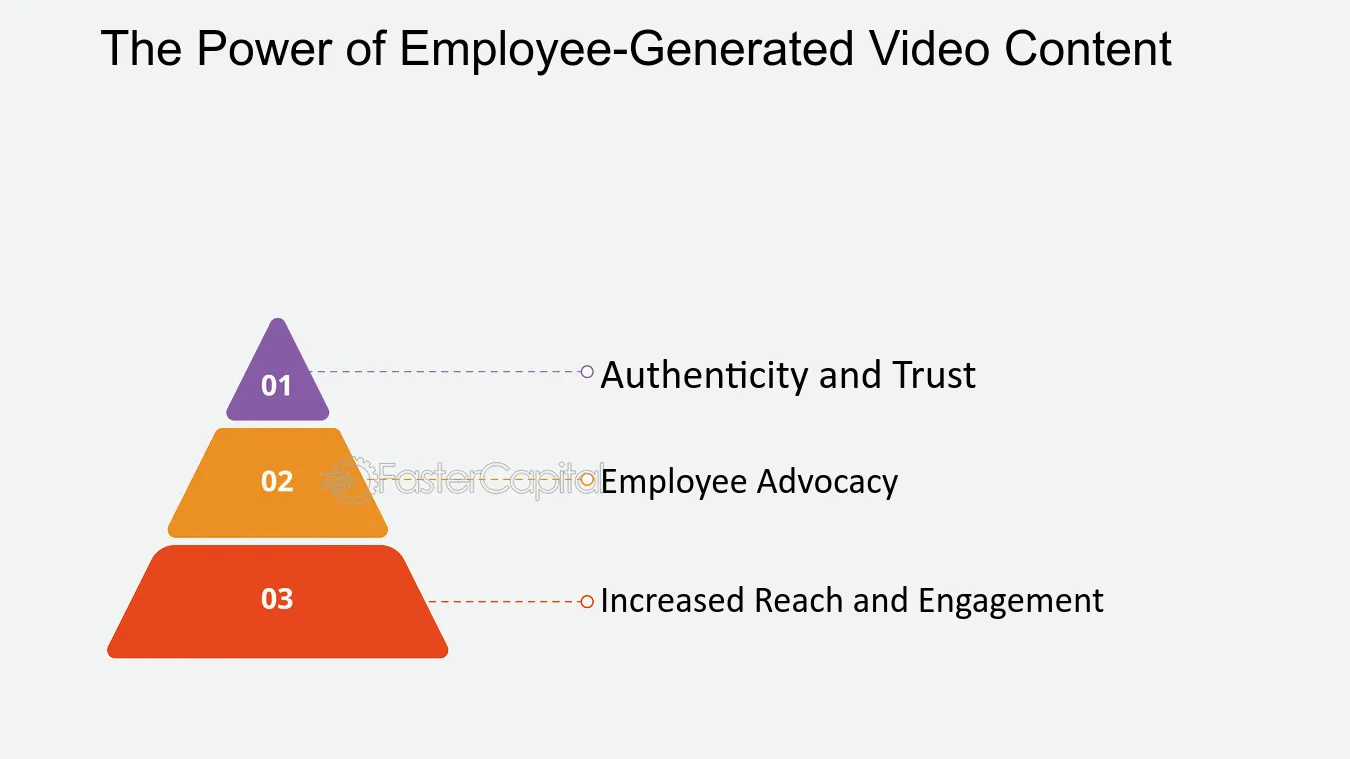
The Power of Employee Generated Video Content - Importance of employee generated video content for boosted reach
17. Measuring the Impact of Employee-Generated Video Content
When it comes to employee-generated video content, measuring its impact is crucial to understanding its effectiveness and determining its value. By analyzing key metrics, organizations can gain insights into how these videos are resonating with their target audience and whether they are contributing to boosted reach. Here, we will explore some key ways to measure the impact of employee-generated video content.
1. View Count: One of the most basic metrics to measure the impact of employee-generated video content is the number of views it receives. A high view count suggests that the video has caught the attention of a significant number of viewers and has the potential to reach a wider audience. For example, if an employee-generated video showcasing a new product or service has a high view count, it indicates that it has piqued the interest of potential customers.
2. Engagement Metrics: Beyond view count, engagement metrics provide valuable insights into how viewers are interacting with employee-generated videos. Metrics such as likes, comments, shares, and subscriptions can indicate the level of interest and involvement generated by the video content. For instance, if an employee-generated video sparks a lot of comments and shares, it suggests that it has resonated with viewers and encouraged them to actively engage with the content.
3. Conversion Rates: Measuring the impact of employee-generated video content goes beyond just views and engagement. It is also essential to track how these videos contribute to desired actions, such as conversions. Conversions can vary depending on the organization's goals, but they may include sign-ups, purchases, or inquiries. By analyzing conversion rates associated with employee-generated videos, organizations can assess their effectiveness in driving desired outcomes.
4. Reach and Impressions: Employee-generated video content can have a significant impact on reaching new audiences and increasing brand visibility. Metrics such as reach and impressions provide insights into how many people have been exposed to the video content. For example, if an employee-generated video is shared by influencers or gains traction on social media platforms, it can significantly expand its reach and increase brand exposure.
5. Feedback and Sentiment Analysis: Employee-generated videos often evoke various responses from viewers. Analyzing feedback and sentiment can help organizations understand how their audience perceives the content and whether it aligns with their brand image and messaging. This analysis can be done through surveys, sentiment analysis tools, or monitoring social media conversations. For instance, if an employee-generated video receives overwhelmingly positive feedback and generates a positive sentiment, it indicates that it is resonating well with the audience.
In conclusion, measuring the impact of employee-generated video content is essential to gauge its effectiveness and determine its value in boosting reach. By analyzing metrics such as view count, engagement, conversion rates, reach, and feedback, organizations can gain valuable insights into their video content's performance and make informed decisions to optimize its impact.
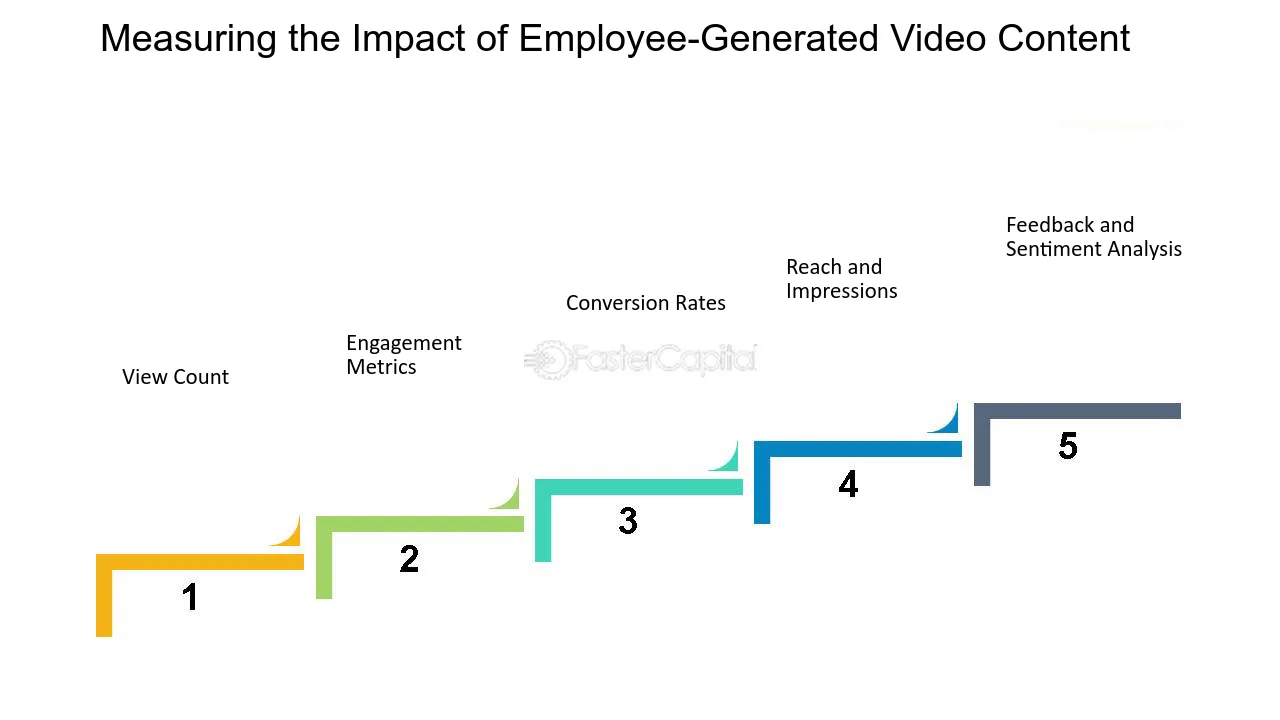
Measuring the Impact of Employee Generated Video Content - Importance of employee generated video content for boosted reach
18. Tips for Encouraging User Generated Video Content
Encouraging users to create video content can be challenging for businesses. However, with the right strategies and incentives, businesses can successfully stimulate the creation of user generated videos. Here are some tips for encouraging user generated video content:
1. Create a video contest: Running a video contest is an effective way to encourage users to create videos. Businesses can set a theme or topic for the contest and offer prizes for the best videos. This not only incentivizes users to create videos but also generates excitement and engagement around the brand.
2. Offer incentives: Providing incentives for users to create videos can be a powerful motivator. These incentives can range from discounts or free products to exclusive access or recognition. By offering valuable incentives, businesses can encourage users to invest time and effort into creating high-quality videos.
3. Provide video creation tools: Not all users have access to professional video editing software. Businesses can provide easy-to-use video creation tools or apps that simplify the video creation process. By removing barriers to entry, businesses can encourage a wider range of users to create videos.
4. Leverage social media influencers: Collaborating with social media influencers who have a large following can help encourage user generated video content. Influencers can create videos featuring the brand and encourage their followers to do the same. This can significantly expand the reach and impact of user generated videos.
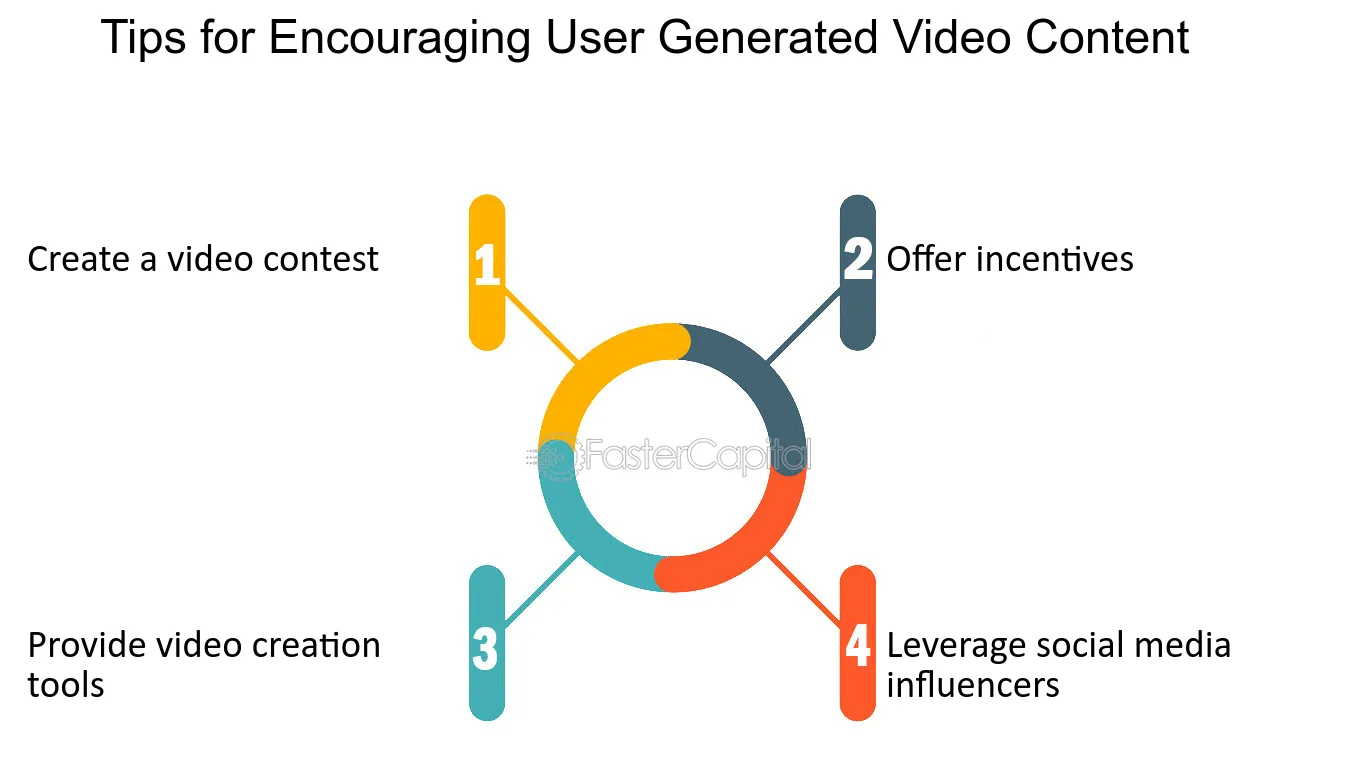
Tips for Encouraging User Generated Video Content - Power of user generated videos for expanded reach and awareness